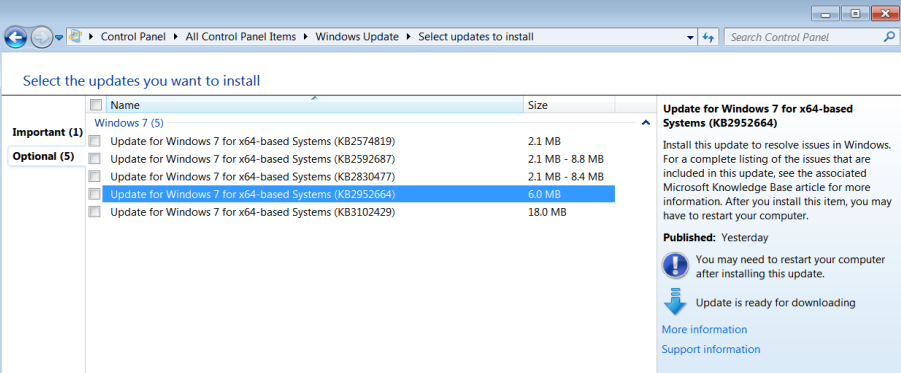Windows KB2952664 and KB2976978 telemetry updates re-released (again)
Here we go again. Microsoft re-released the Windows 7 telemetry update KB2952664 and the Windows 8.1 telemetry update KB2976978 yesterday.
You can check out our October 2016 article on the last re-release of the updates.
Windows 7 and 8.1 users may still know these updates as they were the prerequisites for Microsoft's infamous Get Windows 10 (GWX) campaign that haunted users who did not want to upgrade to Windows 10 for almost a year.
The two updates have been released with the optional flag for now, which means that they won't be installed on most systems.
What is likely going to happen however is that Microsoft will promote the updates in the near future, maybe next Tuesday, to important. This would install the updates automatically on systems that use the default configuration for Windows Update. The company has done so in the past for those updates, and it seems likely that it will do so again this time.
Windows 7 and 8.1 administrators who have hidden the updates will notice that they reappeared in Windows Updates because of the re-release.
KB2952664 and KB2976978 telemetry updates

The hidden flag for updates on Windows Update that administrators can set is only valid for a particular revision of an update. When Microsoft releases a new update revision, it becomes available again.
If it was blocked by hiding it in Windows Update, it needs to be blocked again each time Microsoft re-releases the update.
To hide a Windows update, right-click on it in the Windows Update window, and select "hide update" from the context menu. Unless it is re-released, it won't show up anymore on the machine and won't be installed either.
Both "compatibility updates for keeping Windows up-to-date" are offered through Windows Update and Microsoft Update Catalog.
The update description is identical for KB2952664 and KB2976978:
This update performs diagnostics on the Windows systems that participate in the Windows Customer Experience Improvement Program. The diagnostics evaluate the compatibility status of the Windows ecosystem, and help Microsoft to ensure application and device compatibility for all updates to Windows. There is no GWX or upgrade functionality contained in this update.
According to the description, the update performs diagnostics on machines that participate in the Windows Customer Experience Improvement Program. The program has been part of Windows since Vista, and is designed to collect information on hardware, software and services.
As I mentioned back in October 2016 already when I described how to leave the Windows Customer Experience Improvement program, Microsoft does not reveal the actual data that the program collects.
You could say that these updates are not that bad then if you do not participate in the Windows Customer Experience Improvement Program.
Woody Leonhard demonstrated that the last revision of the updates did trigger new scans regardless of the membership status of the Customer Experience Improvement program. While it has not been tested yet with the new version, it seems likely that Microsoft has not changed that.
We don't know an awful lot about what KB2952664 and KB2976978 actually do. They do seem to trigger a new Windows task called DoScheduledTelemetryRun, but it is unclear what is being collected, and whether something else is changed on the system during installation of the updates.
Tip: You can use the Windows Task Schedule, PowerShell, or Nirsoft's Task Scheduler View to manage tasks on all recent versions of the Windows operating system.
Now You: Did you hide these updates in the past on your machines?